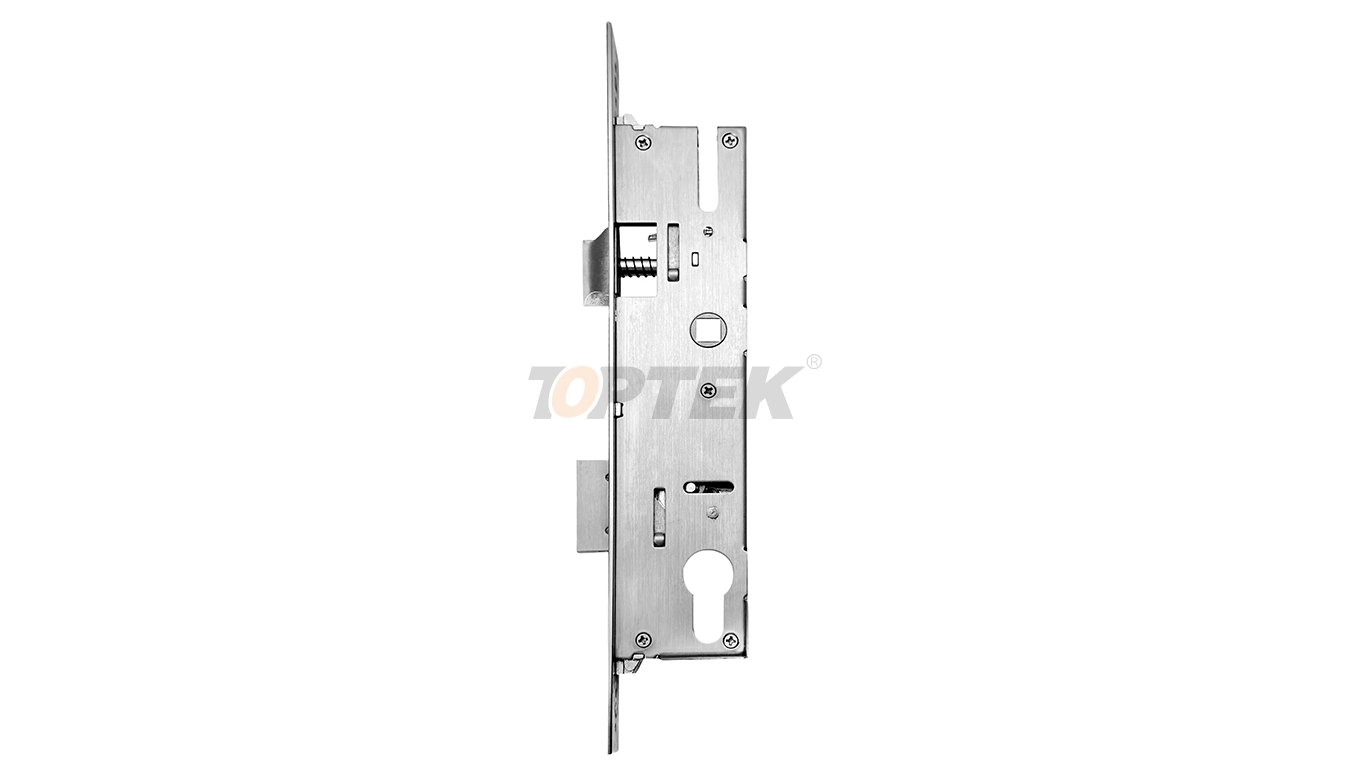Fire doors are a critical part of a building's safety system, designed to slow the spread of fire and smoke. But a door is only as effective as its hardware. Choosing the right fire door lock is not just a matter of security; it's a vital decision that impacts safety and regulatory compliance.
Using the wrong type of lock can compromise the integrity of a fire door, potentially leading to catastrophic failure during an emergency. This guide will walk you through the essential regulations and the specific types of locks approved for use on fire doors, helping you make an informed and safe choice for your property.
Understanding Fire Door Lock Regulations
Before selecting a lock, it's crucial to understand the standards that govern fire door hardware. Fire doors and their components are rigorously tested to ensure they can withstand fire for a specific period (e.g., 30, 60, or 120 minutes). For a lock to be suitable for a fire door, it must meet these same demanding criteria.
Here are the key principles to remember:
· Must be CE Marked: In many regions, hardware for fire doors must be CE marked (or UKCA marked in the UK), indicating it complies with European safety standards. This mark signifies that the product has been tested and meets the requirements of BS EN 12209 (for mechanical locks) or BS EN 179/1125 (for emergency exit hardware).
· Must Not Compromise Door Integrity: The lock must not have features that could weaken the door's structure or allow fire and smoke to pass through. For example, locks requiring large sections of the door to be removed are generally unsuitable.
· Must Allow for Easy Egress: In an emergency, people must be able to exit quickly and easily. A fire door lock should never trap occupants inside. It must be operable from the inside without a key. This is a fundamental safety requirement.
Always check the product's documentation to confirm it is certified for use on fire doors and that it matches the fire rating of the door itself (e.g., an FD30 lock for an FD30 door).
Approved Fire Door Lock Types
Only specific types of locks and latches have been tested and certified for use on fire doors. Here are the most common options available, along with their typical applications.
1. Mortice Sashlocks and Deadlocks
Mortice locks are installed into a pocket—or mortice—cut into the edge of the door. They are a popular and secure option for fire doors when certified for that purpose.
· Mortice Sashlock: This type of lock combines a latch (operated by a handle) and a deadlock (operated by a key). The key function provides security, while the handle allows for easy, key-free exit from the inside. When selecting a sashlock, ensure both the lock case and the handles have been fire-rated.
· Mortice Deadlock: A deadlock provides a single, key-operated bolt for security. It is often used for extra security on doors that don't require latching, such as an office storeroom. However, on a fire escape route, it must be part of a system that allows for safe egress.
· Mortice Latch: This is the simplest option, containing only a latch mechanism operated by a handle or knob on both sides. It keeps the door closed within its frame but offers no locking security. It is suitable for internal fire doors where security is not a concern, such as a living room or kitchen door.
Key Consideration: When installing a mortice lock, it is essential to use intumescent pads or liners around the lock case. When exposed to heat, this material expands to seal any gaps, preventing the passage of fire and smoke.
2. Emergency Exit Hardware
For doors on designated emergency escape routes, specialized hardware is mandatory. These devices are designed for rapid, panic-proof evacuation.
· Panic Bars (Push Bars): Governed by the BS EN 1125 standard, these are required in public areas where occupants may not be familiar with the building layout (e.g., cinemas, shopping centers, schools). A horizontal bar is pushed to release the lock, allowing for quick escape even in a panic situation.
· Panic Latches (Push Pads): These are smaller pads that are pushed to open the door. Regulated by BS EN 179, they are suitable for workplaces and areas where occupants are familiar with the exit routes and panic is less likely.
These devices are designed for egress only and cannot be used to lock someone inside a room.
3. Electromechanical Locks
Modern buildings often use access control systems that require electromechanical locking solutions. These can be used on fire doors, provided they are certified and include a failsafe mechanism.
· Electric Strike: This replaces the standard strike plate in the door frame. It can be unlocked remotely via an access control system. For fire doors, it must be "fail-unlocked" (also known as fail-safe), meaning it automatically unlocks when power is cut, allowing free exit.
· Electromagnetic Locks (Maglocks): These use a powerful magnet to hold the door shut. Like electric strikes, they must be "fail-unlocked" and linked to the building's fire alarm system. When the alarm is triggered, the power to the magnet is cut, and the door is released.
The installation of these systems is complex and should always be carried out by a certified professional to ensure compliance with fire safety regulations.

Locks to Avoid on Fire Doors
Just as important as knowing what locks to use is knowing which ones to avoid. The following types of locks are not suitable for fire doors and will invalidate their certification:
· Night Latches (Yale Locks): Standard surface-mounted night latches are generally not fire-rated. They can also prevent the fire door from closing properly and pose an entrapment risk if they are key-locking from the inside.
· Rim Locks: These traditional, surface-mounted box locks are not designed to withstand fire and should never be used on a fire door.
· Standard Deadbolts or Slide Bolts: Any secondary bolt that requires manual operation from the inside can trap people during an emergency. All locks must allow for a single-action exit.
· Non-Rated Hardware: Never use a lock, latch, or handle that does not explicitly state it is fire-rated. If it isn't certified, it hasn't been tested to withstand fire.
Securing Your Safety and Compliance
Choosing the right fire door lock is a critical responsibility for property managers, builders, and homeowners. It goes beyond simple security—it's about ensuring a building's fire protection systems work as intended when they are needed most.
Always start by verifying the fire rating of your door and selecting hardware that is certified to the same standard. Check for CE/UKCA markings and consult the manufacturer's documentation. When in doubt, seek advice from a fire safety professional or a certified locksmith. By prioritizing compliance, you not only protect your property but, more importantly, the lives of those inside.
Fire Door Locks
Fire Door Lock
EN 1634 Fire rated lock
English
العربية
Français
Русский
Español
Português
Deutsch
italiano
日本語
한국어
Nederlands
Tiếng Việt
ไทย
Polski
Türkçe
አማርኛ
ພາສາລາວ
ភាសាខ្មែរ
Bahasa Melayu
ဗမာစာ
தமிழ்
Filipino
Bahasa Indonesia
magyar
Română
Čeština
Монгол
қазақ
Српски
हिन्दी
فارسی
Kiswahili
Slovenčina
Slovenščina
Norsk
Svenska
українська
Ελληνικά
Suomi
Հայերեն
עברית
Latine
Dansk
اردو
Shqip
বাংলা
Hrvatski
Afrikaans
Gaeilge
Eesti keel
Māori
සිංහල
नेपाली
Oʻzbekcha
latviešu
অসমীয়া
Aymara
Azərbaycan dili
Bamanankan
Euskara
Беларуская мова
भोजपुरी
Bosanski
Български
Català
Cebuano
Corsu
ދިވެހި
डोग्रिड ने दी
Esperanto
Eʋegbe
Frysk
Galego
ქართული
guarani
ગુજરાતી
Kreyòl ayisyen
Hausa
ʻŌlelo Hawaiʻi
Hmoob
íslenska
Igbo
Ilocano
Basa Jawa
ಕನ್ನಡ
Kinyarwanda
गोंगेन हें नांव
Krio we dɛn kɔl Krio
Kurdî
Kurdî
Кыргызча
Lingala
Lietuvių
Oluganda
Lëtzebuergesch
Македонски
मैथिली
Malagasy
മലയാളം
Malti
मराठी
ꯃꯦꯇꯥꯏ (ꯃꯅꯤꯄꯨꯔꯤ) ꯴.
Mizo tawng
Chichewa
ଓଡ଼ିଆ
Afaan Oromoo
پښتو
ਪੰਜਾਬੀ
Runasimi
Gagana Samoa
संस्कृत
Gaelo Albannach
Sepeti
Sesotho
chiShona
سنڌي
Soomaali
Basa Sunda
Wikang Tagalog
Тоҷикӣ
Татарча
తెలుగు
ትግንያውያን
Xitsonga
Türkmençe
संस्कृत
ئۇيغۇرچە
Cymraeg
isiXhosa
ייִדיש
Yorùbá
isiZulu




































